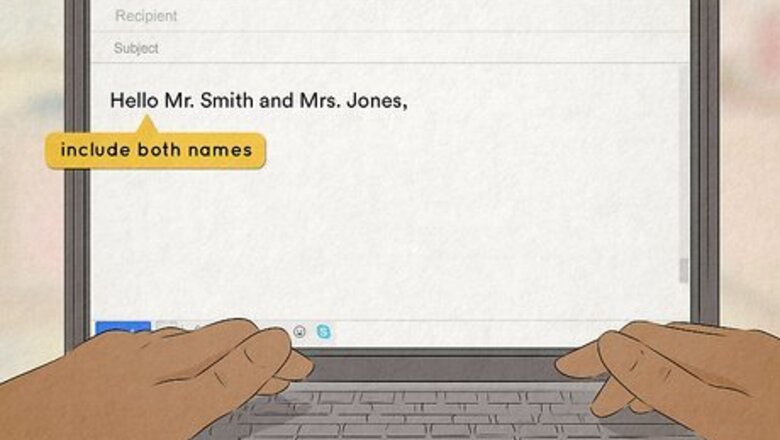
views
- Use both of the recipients’ names after your greeting, like “Hello Max and Ava,” or, “Good afternoon Mr. Johnson and Mrs. Smith.”
- Include both people’s email addresses in the “To” field if the message requires both of their attention. Loop someone in casually by CCing them instead.
- Be direct in the body of your email about what actions you need from each of the recipients to avoid any confusion.
How do you greet two people in an email?

Include both names after your opening greeting. If you’re starting a formal email, use a simple greeting like “Hello,” “Dear,” or “Good afternoon” before writing out the recipients’ names. Use their full first name if you know them, or refer to them by their title and last name if you’re reaching out to people you don’t know. For a more casual greeting, try using “Hey” or “Hi” instead. Example: Hello Mr. Smith and Mrs. Jones Example: Good afternoon Martin and Dana Example: Hey Demi and Selena
How do you address a group of people in an email?

Use a collective term like “everyone” or “team” after your greeting. Rather than listing everyone’s name in the email, save some space and time by greeting the whole group. You could say something like: Hello everyone Good afternoon team Attention everybody
Addressing an Email to Multiple Recipients
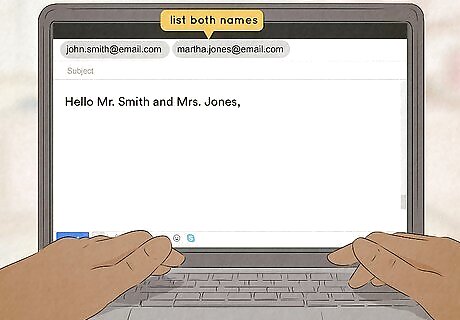
List both names in the “To” field of a formal email. If you need direct action from both of the people you’re emailing, then include both of their email addresses separated by a comma. That way, both of the recipients will know that the email is important information they need to read.

Use the “Cc” field to casually loop another person into an email. Include the main recipient of the email in the “To” field. If you need to see the info you’re sending but don’t need direct action from them, then list their email address in the “Cc” section. Both people and email addresses will still be visible at the top of your email.
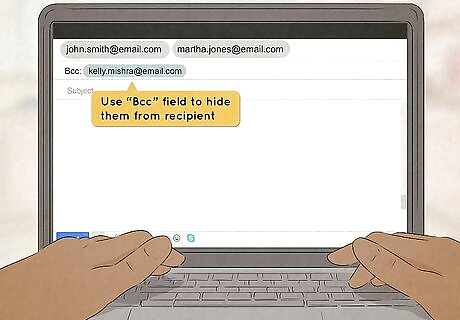
Put email addresses in the “Bcc” field to hide them from recipients. If someone doesn’t want their email address shared with the other person, then add it to the “Bcc” list. When the email gets sent out, only the recipients in the “To” and “Cc” field will have their email addresses visible. This works great if you’re sending an email to 2 people who don’t know each other or if you’re emailing a large group of people.
Email Etiquette

Have a call to action in the subject line. Give a clear and concise subject line so the recipients know exactly what to expect when they open your email. Try to include the exact thing you need them to do and consider mentioning how long it will take to complete. You can even mention what is expected of the recipients right in the subject. Example: 5 minutes - survey feedback needed Example: Approval Required from Jules and Jackie
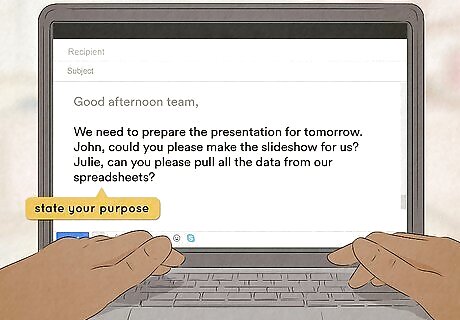
Get straight to the point in the body paragraphs. Jump right into the main focus of your email so the recipients don’t have to scroll through to find the important information. If you need each person to do specific tasks, clearly state what you need from them so there isn’t any confusion on who’s getting the work done. Example: We need to prepare the presentation for tomorrow. John, could you please make the slideshow for us? Julie, can you please pull all the data from our spreadsheets?
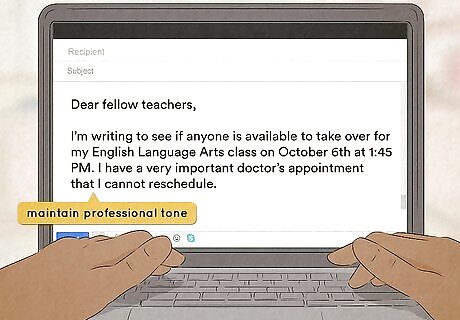
Maintain a professional tone. If you’re sending a professional email, avoid using slang or emojis so you don’t sound too casual. Stick to the main topic that you need to discuss without any jokes or sarcasm that could get lost in translation. Limit your use of exclamation points since it could come across like you’re shouting. If you have trouble detecting the tone in your email, try reading it out loud to determine how it sounds. Alternatively, have a friend read it out loud to you to see how they interpret your tone.
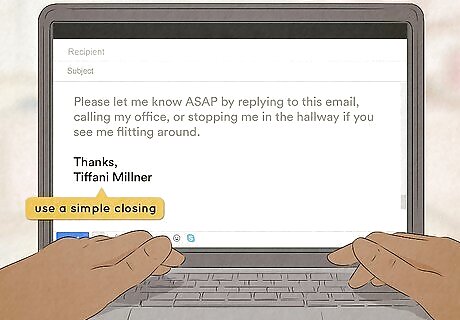
End your email with a simple closing. When you’re finished with the main body of your email, wrap it up with a few kind words. After your closing, include your full name just like you’re ending a letter. To write formal business emails, use an email signature with your full name, title, company name, and your contact information. Some closings you could use include Thank you Best regards Sincerely

Proofread your message before sending it. Take a little time before you hit send to read through your message and make sure everything is spelled properly. Check that the information you want to convey comes across clearly and rewrite anything that sounds confusing. When you’re sure everything looks correct, then send the email out. If you’re putting attachments on your email, ensure that they’re named properly and that you’ve selected the right files.




















Comments
0 comment